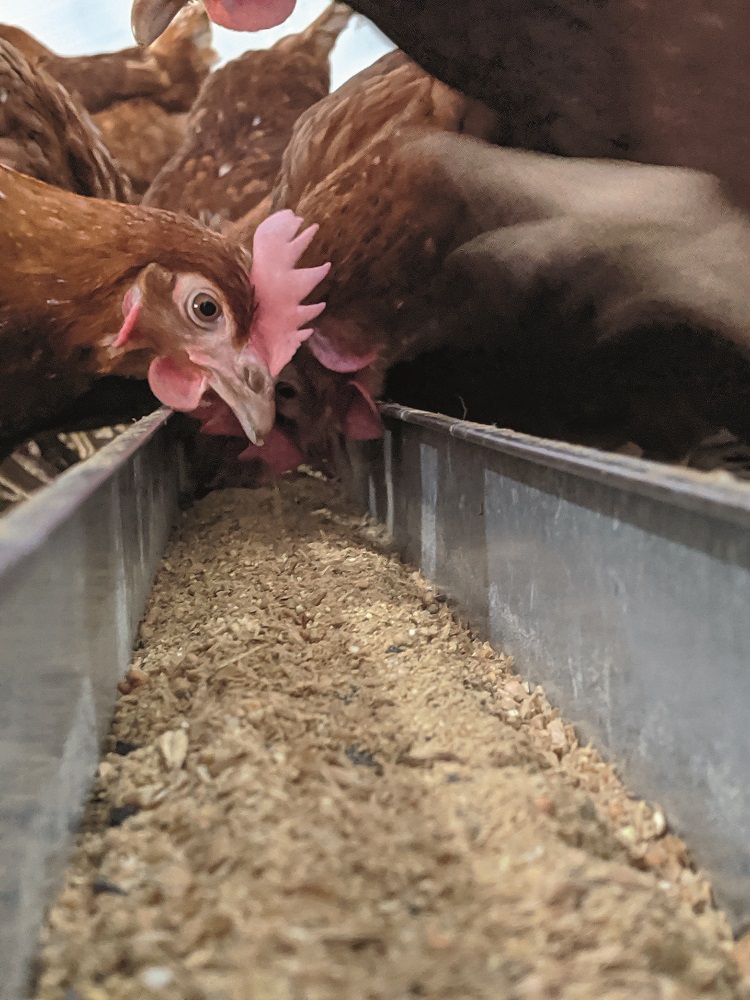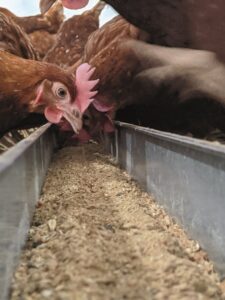Quality and consistency of feed ingredients is key to maintaining efficiency
Feed containing quality raw materials and formulated to a balanced nutritional spec is key to maintaining feed consistency and helping free-range layers unlock their full genetic potential. Fiona Hunt, poultry specialist at Wynnstay, explains how consistent nutrition can enable cost-effective production.
“Good feed provides the building blocks for flock performance,” says Hunt. “Hens need the right balance of energy, amino acids, linoleic acid, vitamins, macro minerals and trace elements in their diet, alongside an optimum feed intake, to achieve breed targets for egg production and quality throughout lay.”
Hunt explains when by-products from the food processing sector are included, consistency in the feed specification can potentially be lost, especially if there is a high proportion of by-products in the feed, as some can have variable nutrient levels depending on the type of by-product. “Examples include biscuit or bakery meal, breakfast cereal meal and confectionery meal,” she says.
“It’s important to understand what’s in the feed you’re purchasing. While food processing by-products can offer a nutritional solution, if there’s variation in the product used, and the ration isn’t formulated with this in mind every time, it can potentially affect the flock’s performance.”
She adds that the amount used can also affect the palatability of feed, leading to either an increase or decrease in consumption. “In turn, this inconsistency in intakes can affect other factors such as the birds’ gut health due to bird stress and the impact it has on the immune system.”
This potential variation in feed intakes can also have economic implications, as increased intakes, above the breed average, can lead to a higher feed bill at the end of the flock. “When choosing your layer feed, intakes and expected performance should be taken into consideration, along with price per tonne and feed consistency.
“A feed that has a higher price per tonne, usually due to a higher nutrient specification, can in many cases be more economic as feed intakes tend to be lower and performance is just as good, if not better, than a lower spec product.
“Quality raw materials can also add to the cost of the feed, but less variable raw materials help reduce the risk of inconsistency, and therefore the risk of variable feed intakes,” she says.
“Depending on the consistency of feed, an individual bird’s intake can increase anywhere between 5 and 10g per day. “When this is multiplied by the number of hens in the flock, the extra intake can cost thousands over the course of a flock’s lifetime, even if the feed is cheaper on a per tonne basis to start with.
“For example, if feed intakes were 10g per bird per day above the average for the breed, from 18 weeks to 72 weeks, there would be an extra 3.78kg of feed required per bird. On a 32,000-bird unit this would roughly equate to an extra 121t of feed, and assuming an average feed cost of £235/t, the additional cost over the life of the flock could potentially be £28,435.”
NUTRIENT REQUIREMENTS FOR FREE-RANGE LAYERS
ENERGY: the optimal energy requirement varies according to stage of lay and breed, and birds will increase their intake if energy requirements are not being met. This will also depend on factors such as environment, health status, and other nutrients in the feed. The right energy level, especially in early lay, is key to achieving optimal egg production and egg size, and to ensure hens can sustain high egg mass output later in the laying cycle.
AMINO ACIDS: laying hens require amino acids, the building blocks of protein, rather than crude protein itself. When supplied at the correct level, amino acids such as lysine and methionine support optimal development, egg production and egg size. Linoleic acid is an essential fatty acid that needs to be supplied in layers feed. Also known as omega-6, it supports egg size and productivity
MACRO MINERALS: calcium and phosphorus are essential for bone formation and skeletal integrity. However, most calcium in a laying hen’s diet is used for eggshell formation. Other minerals also important for eggshell quality are sodium, potassium and chloride, which also play a role in bone development and amino acid utilisation.
VITAMINS AND TRACE ELEMENTS are involved in numerous functions, including growth, bone development, egg production, eggshell quality and immune status.




